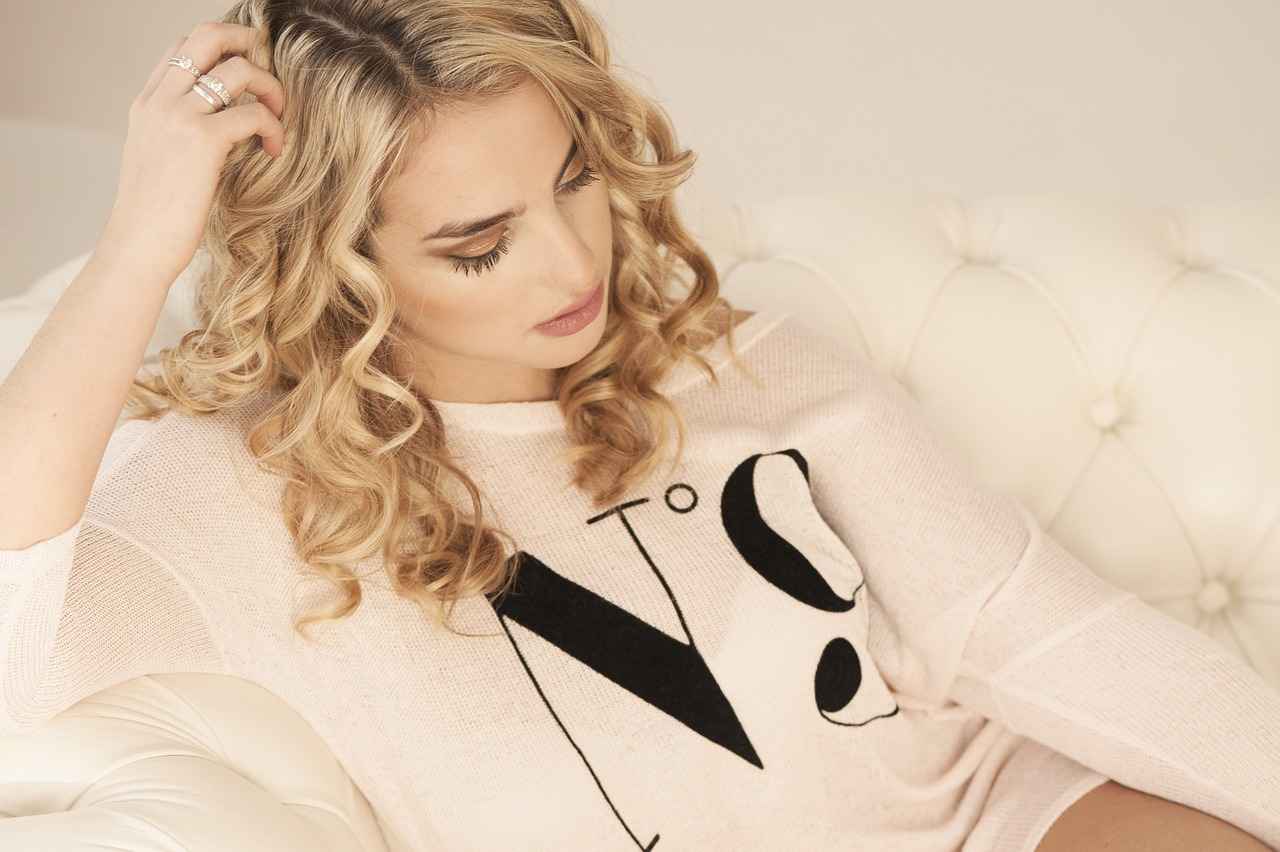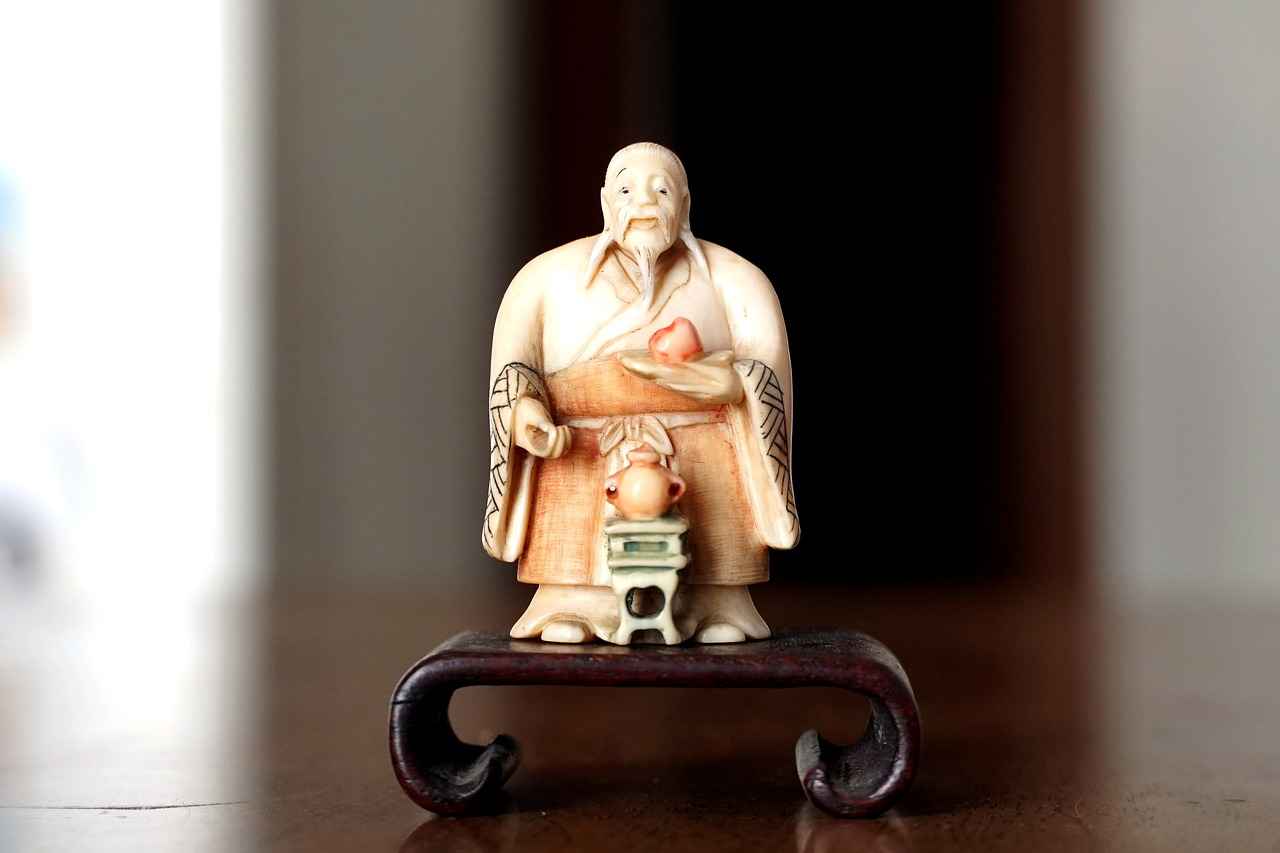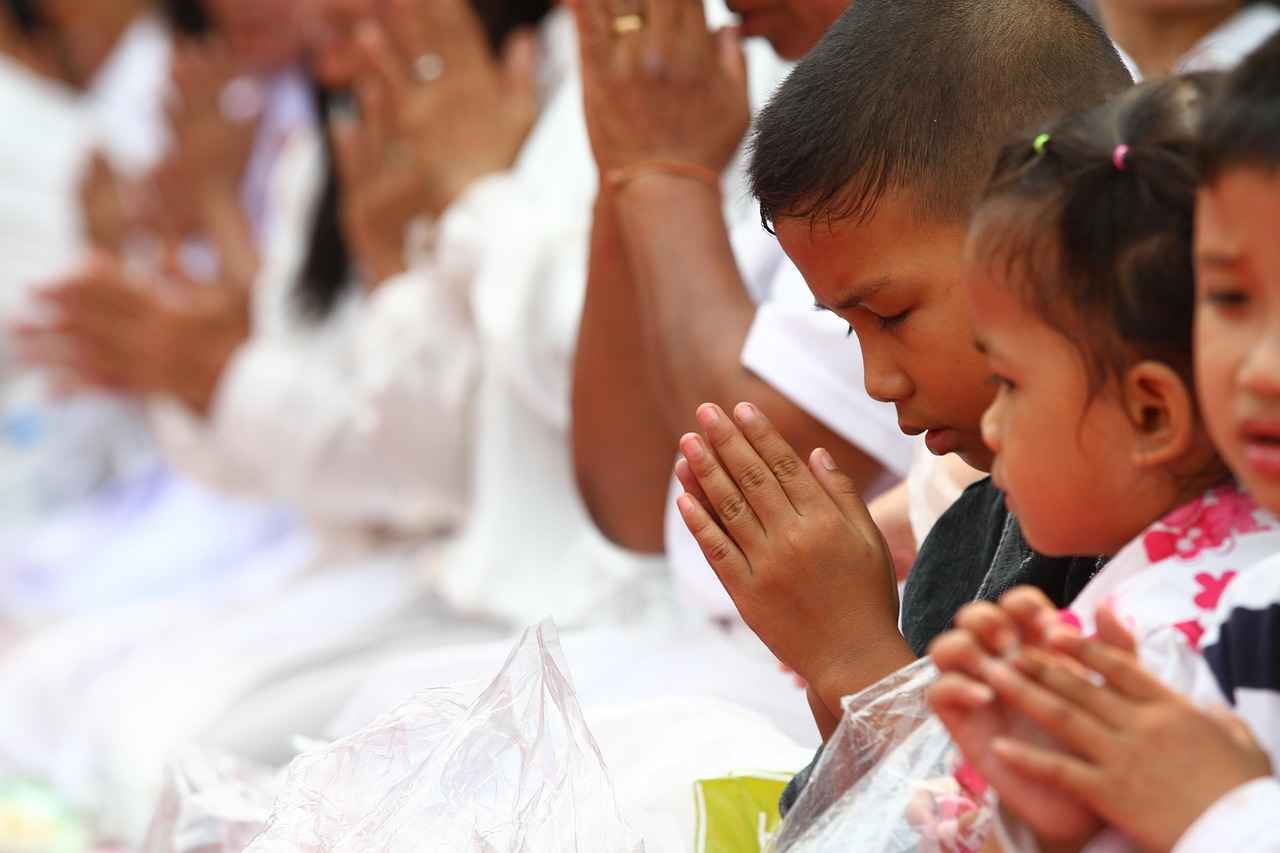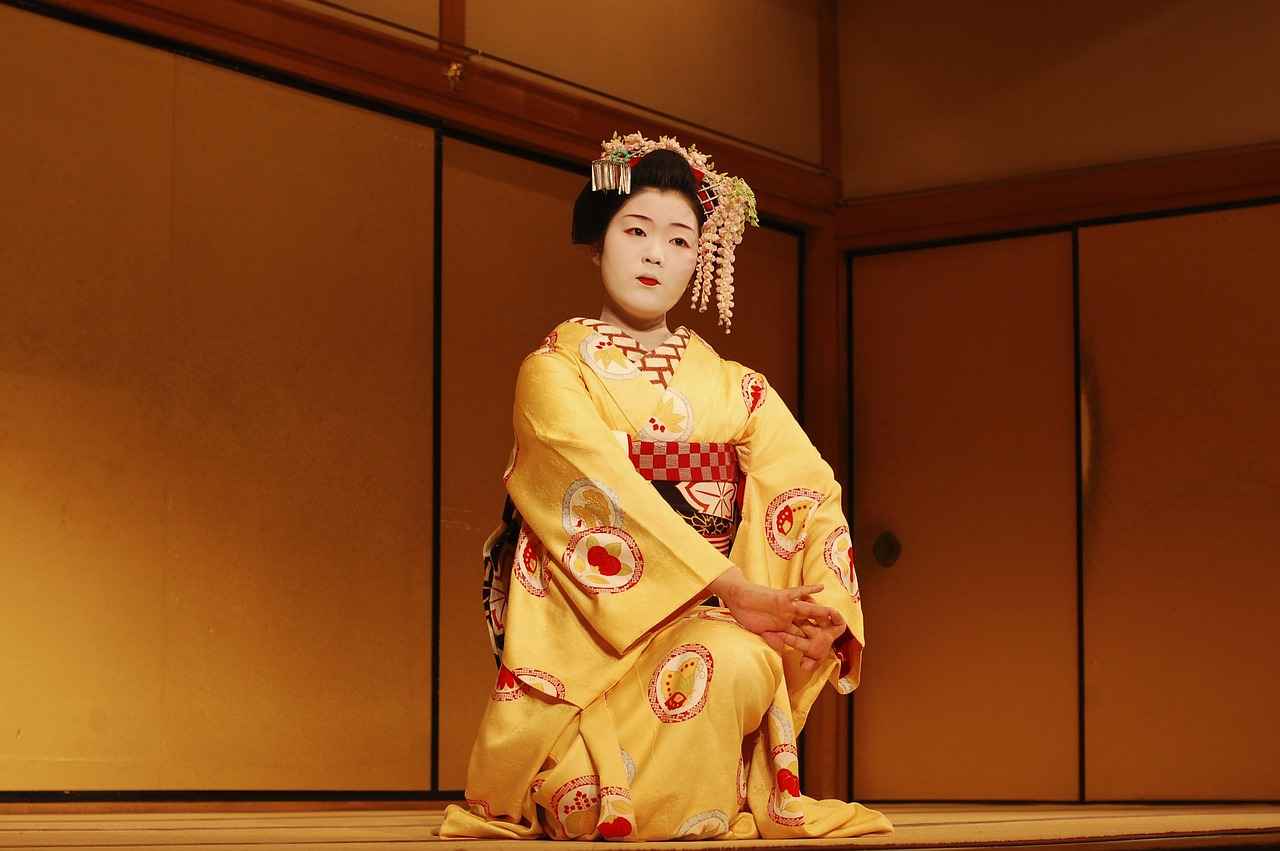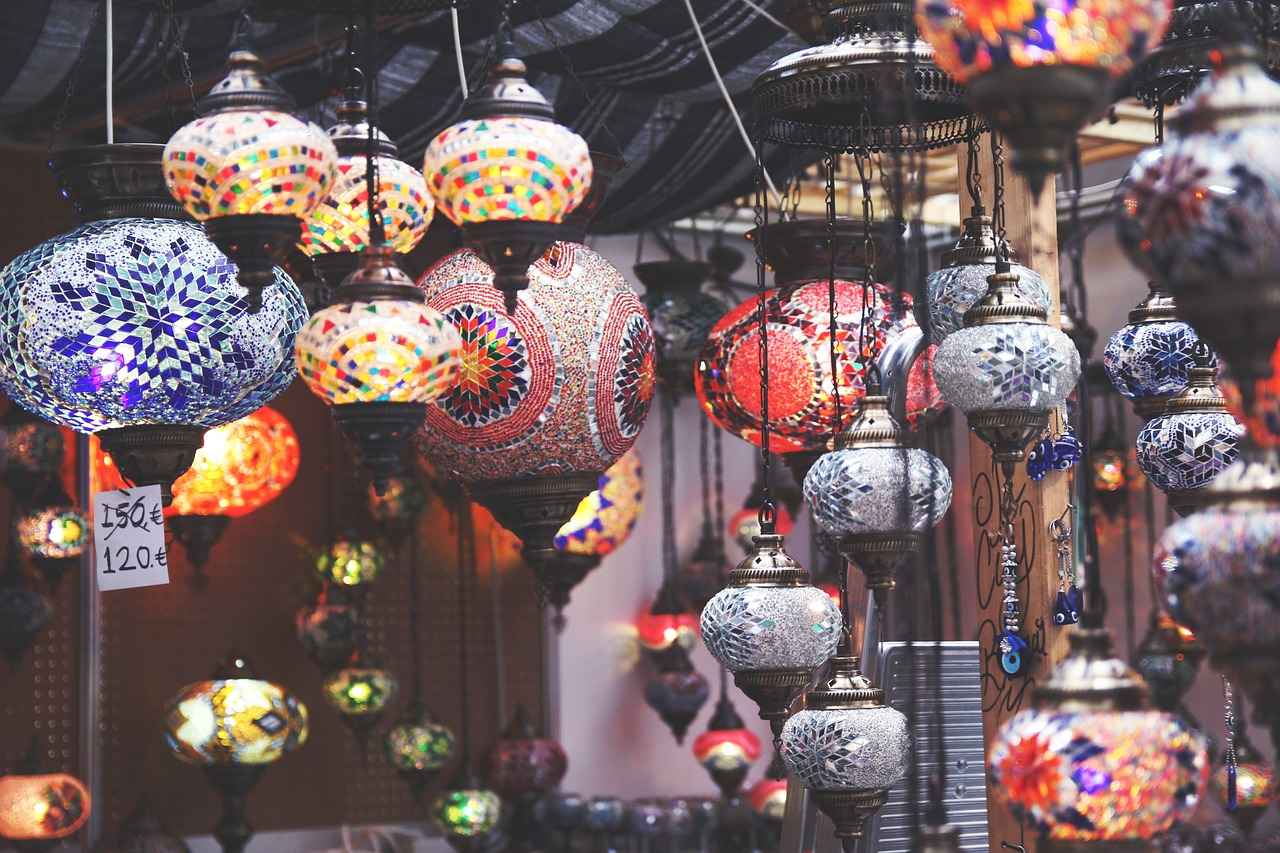This article explores the differences between kimono and yukata, helping you decide which traditional Japanese attire is best suited for your next event. Discover their origins, styles, and occasions for wear.
Understanding Kimono
The kimono is a traditional Japanese garment known for its intricate designs and formal style. Originating in the Heian period, it symbolizes cultural heritage and sophistication. Kimonos are often made from luxurious materials such as silk, featuring elaborate patterns that reflect the wearer’s status and the occasion. Various types of kimonos exist, including the furisode for young women and the homongi for married women, each serving different cultural purposes.
The Essence of Yukata
The yukata, on the other hand, is a casual summer garment typically made from cotton. Originally worn by bathers in hot springs, it has evolved into a popular choice for summer festivals and casual gatherings. Yukatas are often adorned with vibrant and playful designs, making them comfortable and stylish for warm weather events.
Material Differences
- Silk Kimonos: Luxurious and formal, ideal for weddings and ceremonies.
- Cotton Yukatas: Lightweight and breathable, perfect for summer festivities.
Styling and Accessories
When wearing a kimono or yukata, the right accessories can elevate your look. For kimonos, consider pairing them with a obi (sash) and traditional footwear like geta. Yukatas can be accessorized with lighter obis and comfortable sandals, enhancing their casual charm.
Occasions for Wearing Kimono
Kimonos are typically reserved for formal events such as weddings, tea ceremonies, and cultural festivals. Understanding the context is crucial for selecting the appropriate kimono, ensuring you honor tradition while looking your best.
When to Choose a Yukata
Yukatas shine during casual summer events like fireworks festivals and outdoor picnics. Their relaxed fit and vibrant patterns make them a go-to choice for warm weather celebrations.
Conclusion: Choosing the Right Attire
Ultimately, the decision between a kimono and a yukata hinges on the event’s formality and the season. By considering the occasion and your personal style, you can confidently choose the perfect attire for your next event.

Understanding Kimono
The kimono is a traditional Japanese garment that epitomizes the rich cultural heritage of Japan. Known for its intricate designs and formal style, the kimono has a history that spans centuries, reflecting the evolving aesthetics and social norms of Japanese society. This article will delve into the origins, significance, and various types of kimonos available for different occasions.
Historically, the kimono was a staple of daily wear, but over time, it has transformed into a symbol of cultural identity and artistry. The word “kimono” literally means “thing to wear,” and its design often incorporates beautiful patterns and colors that signify various meanings, such as the changing seasons or personal milestones.
There are several types of kimonos, each suited for different occasions:
- Furisode: A long-sleeved kimono typically worn by young women during formal events, such as coming-of-age ceremonies.
- Tomesode: A formal kimono worn by married women, characterized by its shorter sleeves and elegant designs.
- Yukata: A casual summer kimono made of cotton, often worn during festivals and outdoor events.
The significance of the kimono extends beyond its aesthetic appeal. It is often associated with important life events, such as weddings and tea ceremonies, where the choice of kimono can convey respect and honor. Additionally, the craftsmanship involved in kimono making is a revered art form, with techniques passed down through generations.
In conclusion, understanding the kimono is essential for appreciating its role in Japanese culture. Whether worn for formal occasions or cultural celebrations, the kimono remains a powerful symbol of tradition, artistry, and identity.

The Essence of Yukata
The yukata is a traditional Japanese garment that embodies the spirit of summer. Made predominantly from cotton, this casual attire is not only comfortable but also stylish, making it a popular choice for various warm-weather events. Let’s delve deeper into its origins, typical designs, and the occasions where donning a yukata is particularly fitting.
Origins of Yukata
The yukata traces its roots back to the Heian period (794-1185), originally serving as a bathrobe for the Japanese elite. Over the centuries, it evolved into a fashionable summer garment, especially during the Edo period (1603-1868). The transition from a practical piece to a vibrant clothing option reflects the cultural shifts in Japan, emphasizing both comfort and aesthetics.
Typical Designs
Yukatas are characterized by their bright colors and intricate patterns, often featuring floral motifs, geometric shapes, or traditional Japanese designs. The fabric is typically lightweight, making it perfect for hot summer days. The garment is usually worn with a obi (a wide sash) that can be tied in various styles, adding a touch of elegance to the overall look.
Events for Wearing Yukata
- Summer Festivals: Yukatas are commonly worn during summer festivals, known as hanabi taikai (fireworks festivals), where participants enjoy traditional games, food stalls, and fireworks displays.
- Outdoor Gatherings: Casual outdoor events, such as picnics or barbecues, are ideal for wearing a yukata, allowing for ease of movement and comfort.
- Tea Ceremonies: Although less formal than a kimono, a yukata can also be appropriate for casual tea ceremonies, particularly in summer.
In summary, the yukata is a versatile and culturally significant garment that captures the essence of Japanese summer. Whether you’re attending a festival or enjoying a day outdoors, wearing a yukata allows you to embrace tradition while staying cool and comfortable.
Material Differences
The materials used in kimonos and yukatas greatly affect their appearance and comfort. Understanding the differences between these fabrics is essential when choosing the right attire for various events. This section compares silk and cotton, highlighting their unique qualities and suitability for different occasions.
Silk kimonos are renowned for their elegance and luxurious feel. The shimmering surface of silk not only enhances the garment’s beauty but also signifies its cultural importance in Japan. Traditionally, silk is used for formal occasions such as weddings, tea ceremonies, and other significant celebrations. The intricate designs and vibrant colors often found in silk kimonos reflect the artistry and craftsmanship of skilled artisans.
- Comfort: Silk is soft against the skin, providing a comfortable wearing experience.
- Durability: While silk is delicate, with proper care, it can last for generations.
- Care: Silk requires gentle cleaning methods, often needing dry cleaning to maintain its luster.
On the other hand, cotton yukatas are favored for their lightweight and breathable qualities. Perfect for summer festivals and casual gatherings, cotton is a practical choice that allows for ease of movement and comfort in warm weather. The simplicity of cotton designs often features bright colors and playful patterns, making yukatas a popular choice for outdoor events.
- Affordability: Cotton yukatas are generally more budget-friendly than silk kimonos.
- Maintenance: Cotton is easy to wash and care for, making it suitable for everyday wear.
- Versatility: Yukatas can be styled in various ways, allowing for personal expression during casual outings.
In summary, the choice between silk and cotton comes down to the occasion and personal preference. Silk kimonos are ideal for formal settings, while cotton yukatas shine in casual, summer environments. Understanding these material differences will help you make an informed decision for your next event.
Silk Kimonos
represent the pinnacle of traditional Japanese fashion, characterized by their luxurious fabric and intricate designs. These garments are not merely clothing; they are rich in cultural heritage and craftsmanship. In this section, we will explore the artistry behind silk kimonos, their cost, care, and the significant role they play in Japanese society.
The craftsmanship of silk kimonos is a meticulous process that involves skilled artisans. Each kimono is often hand-painted or embroidered, showcasing unique patterns that reflect various themes, seasons, and even personal stories. The use of high-quality silk not only adds to the garment’s elegance but also enhances its durability, making it a cherished piece for generations.
| Aspect | Details |
|---|---|
| Cost | Silk kimonos can range from a few hundred to several thousand dollars, depending on the intricacy of the design and the reputation of the artisan. |
| Care | Proper care is essential to maintain the beauty of silk kimonos. It is recommended to dry clean them and store them in a cool, dry place away from direct sunlight. |
| Cultural Significance | Silk kimonos are often worn during formal occasions such as weddings, tea ceremonies, and festivals, symbolizing respect and tradition. |
Wearing a silk kimono is not just about fashion; it is about embracing a rich cultural identity. Each kimono tells a story and serves as a connection to the past. The cultural significance of these garments is profound, as they represent the values, history, and artistry of Japanese society.
In conclusion, silk kimonos are a stunning representation of Japanese craftsmanship and cultural heritage. Their beauty and significance make them a timeless choice for formal occasions, allowing wearers to celebrate tradition while enjoying the luxurious feel of silk.
Cotton Yukatas
Cotton yukatas are a popular choice for those looking to embrace traditional Japanese attire during the hot summer months. These garments are not only lightweight and breathable, but they also offer a unique blend of comfort and style that makes them ideal for various casual occasions.
One of the most appealing aspects of cotton yukatas is their affordability. Unlike silk kimonos, which can be quite expensive, cotton yukatas are budget-friendly, allowing more people to enjoy this beautiful piece of clothing without breaking the bank. This accessibility makes them a favorite among festival-goers and casual wear enthusiasts alike.
In addition to being economical, cotton yukatas are incredibly easy to maintain. They can be machine washed and dried, which is a significant advantage for those who lead busy lives. This practical aspect means that you can wear your yukata to summer festivals, outdoor gatherings, or even just lounging at home without worrying about intricate care routines.
When it comes to comfort, cotton yukatas shine. The fabric is soft against the skin and allows for excellent airflow, making them perfect for hot and humid days. Whether you are watching fireworks or enjoying a summer picnic, you can move freely and comfortably in a cotton yukata.
Furthermore, the variety of designs and colors available in cotton yukatas means you can express your personal style. From vibrant floral patterns to more subtle, traditional motifs, there is a yukata to suit every taste. This versatility makes them suitable not only for festivals but also for casual gatherings and family outings.
In conclusion, cotton yukatas are a fantastic choice for anyone looking to enjoy the essence of Japanese culture while prioritizing comfort, affordability, and ease of maintenance. They are a perfect addition to your summer wardrobe, allowing you to celebrate seasonal festivities in style.
Styling and Accessories
When it comes to traditional Japanese attire, kimono and yukata are both beautiful choices, but styling them correctly is essential to achieve the desired look. This section delves into the various accessories that can elevate your outfit, focusing on the obi (sashes) and appropriate footwear.
Accessorizing the Kimono
- Obi: The obi is a wide sash that wraps around the waist and is crucial for securing the kimono. There are many styles of obi, including fukuro obi for formal occasions and haneri obi for more casual wear. Choosing the right obi can significantly enhance the overall elegance of your kimono.
- Footwear: Traditional footwear such as geta or zori complements the kimono perfectly. Geta are elevated wooden sandals ideal for outdoor events, while zori are more suitable for indoor settings. Ensure that the color and style of your footwear match your kimono’s design for a cohesive look.
- Accessories: Additional accessories like obijime (decorative cord) and haneri (collar) can add unique touches to your outfit. A well-chosen obiage (obi scarf) can also introduce a pop of color.
Styling the Yukata
- Obi: Yukatas typically use a simpler obi, such as a hiki obi or taiko obi, which is easier to tie and often made of lighter materials. The obi for a yukata is usually more colorful and playful, reflecting the casual nature of the garment.
- Footwear: Like kimonos, yukatas are often paired with geta or zori, but they can also be worn with tabi socks for added comfort. Choose footwear that suits the occasion, whether it’s a summer festival or a casual gathering.
- Additional Elements: Consider incorporating hachimaki (headbands) or fan as accessories for a festive look. These elements not only enhance your outfit but also add to the cultural experience.
In conclusion, whether you choose a kimono or a yukata, the right accessories play a vital role in completing your look. By carefully selecting your obi, footwear, and additional adornments, you can create a stunning ensemble that reflects the beauty of traditional Japanese fashion.
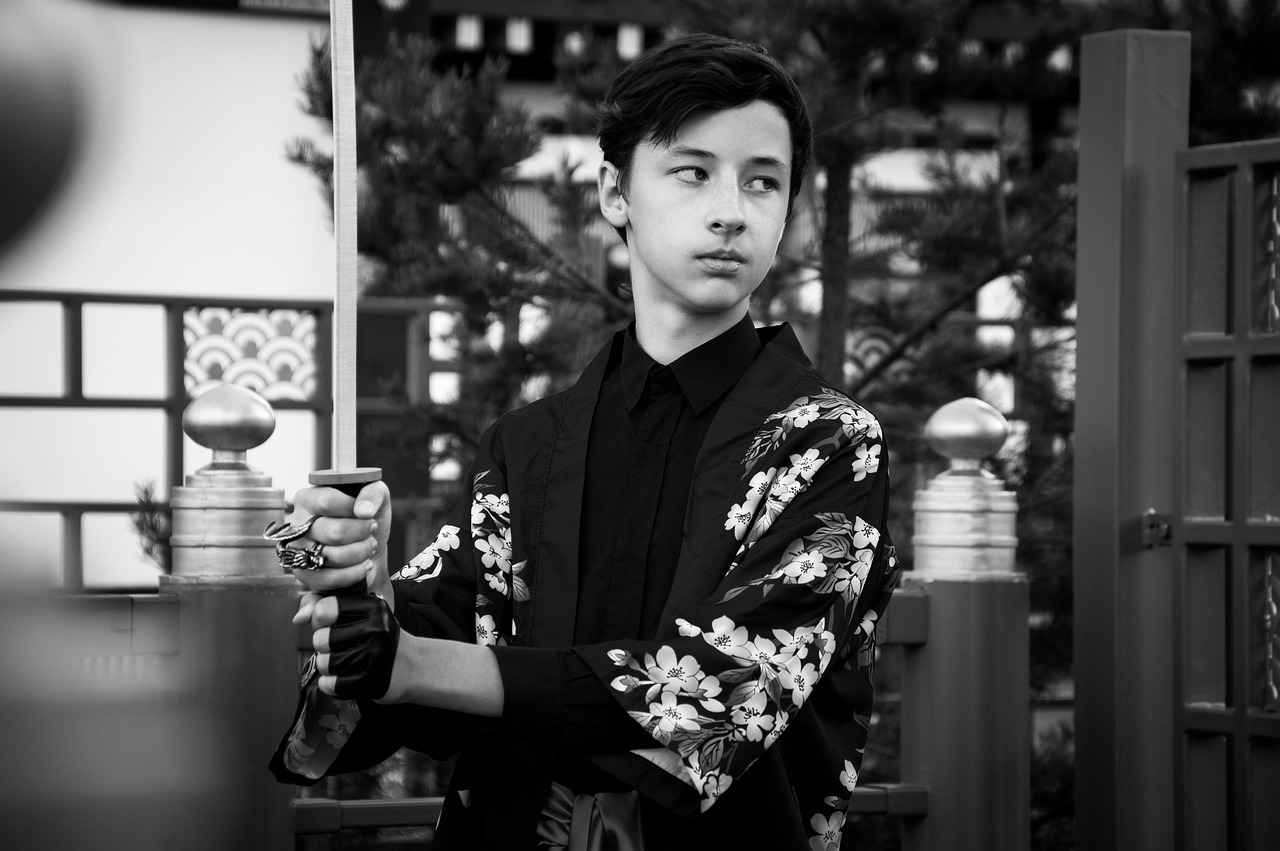
Occasions for Wearing Kimono
Kimonos are a beautiful representation of Japanese culture, often associated with a variety of formal occasions. Understanding when and how to wear a kimono can greatly enhance your experience at these events. Below, we explore specific occasions for wearing a kimono and offer tips on selecting the right style for each situation.
| Occasion | Description | Kimono Style |
|---|---|---|
| Weddings | Worn by both the bride and guests, kimonos at weddings symbolize good fortune. | Furisode for young women, Montsuki for men. |
| Tea Ceremonies | A traditional event emphasizing grace and respect, where kimonos enhance the ceremonial atmosphere. | Hōmongi or Tsukesage are popular choices. |
| Festivals | Seasonal festivals are vibrant occasions where kimonos add to the celebratory spirit. | Yukata is often preferred for summer festivals, while Komon can be worn for more formal events. |
| Graduations | Graduates often wear kimonos to signify their achievement and transition into adulthood. | Furisode or Hōmongi are ideal choices. |
When selecting a kimono for any occasion, consider the season, color, and design. For instance, lighter fabrics and brighter colors are suitable for summer events, while darker, richer colors are preferred in winter. Additionally, the length of the kimono and the type of obi (sash) can significantly influence your overall look.
In conclusion, choosing the right kimono for various occasions involves understanding both the cultural significance and the specific requirements of each event. By paying attention to details such as style, fabric, and accessories, you can ensure that you not only look beautiful but also honor the traditions of this exquisite garment.
Formal Events
Understanding the appropriate contexts for wearing a kimono is essential for anyone looking to embrace this beautiful aspect of Japanese culture. Kimonos are not just garments; they are a representation of tradition, history, and artistry. In this section, we will explore the formal events and cultural ceremonies where a kimono is expected attire, ensuring you feel confident and appropriately dressed.
First and foremost, kimonos are traditionally worn during weddings. In these joyous celebrations, the bride often wears a stunning white kimono called a shiro-muku, symbolizing purity. Guests may also don kimonos, with men typically wearing a hakama and women opting for colorful, intricately designed kimonos.
Another significant occasion for wearing a kimono is the tea ceremony, or chanoyu. This ritual emphasizes harmony, respect, and tranquility, and participants usually wear kimonos to reflect the ceremony’s formality and cultural importance. The choice of kimono often depends on the season and the specific type of tea ceremony being held.
Additionally, cultural festivals such as Hanami (cherry blossom viewing) or Obon (a festival honoring deceased ancestors) are perfect opportunities to wear a kimono. These events celebrate nature, family, and community, making them ideal for showcasing the beauty of this traditional attire.
Moreover, graduation ceremonies and coming-of-age celebrations (Seijin Shiki) are also occasions where kimonos are commonly worn. Young adults celebrate their transition into maturity, often adorned in stunning kimonos that signify their new status in society.
In conclusion, wearing a kimono at formal events not only pays homage to Japanese culture but also allows individuals to participate in traditions that have been cherished for generations. Understanding the context and significance of these occasions will help you choose the right kimono and feel confident in your attire.
Seasonal Considerations
Seasonality plays a significant role in the selection of kimonos and yukatas, influencing not only the fabric choice but also the colors and patterns that are appropriate for different times of the year. Understanding these seasonal nuances is essential for making an informed decision about your attire.
During the spring, kimonos often feature floral patterns and pastel colors that reflect the blooming cherry blossoms. Fabrics such as silk are popular during this season, providing a luxurious feel that complements the elegance of spring festivities. Events like Hanami (flower viewing) are perfect occasions to showcase these delicate designs.
As the summer months approach, the focus shifts to lightweight materials such as cotton, particularly for yukatas. These garments are designed for comfort and breathability, making them ideal for hot weather and outdoor events. Bright colors and bold patterns are typical, often inspired by nature and summer festivals. Festivals such as Obon and fireworks displays are quintessential occasions for wearing yukatas.
In autumn, kimonos tend to adopt richer hues like deep reds, oranges, and browns, mirroring the changing leaves. Fabrics may vary from lightweight to heavier materials depending on the occasion. Traditional events like Shichi-Go-San (a festival for children) see families donning kimonos that reflect the vibrant colors of the season.
Finally, in winter, heavier fabrics like wool or silk are favored for warmth. Kimonos may feature darker, muted colors with intricate designs that symbolize the winter landscape. Special occasions such as New Year celebrations often call for formal kimonos, making it essential to choose designs that reflect the solemnity and joy of the season.
In conclusion, understanding the impact of seasonality on kimono and yukata selection can greatly enhance your attire choices. By considering fabric, color, and pattern, you can ensure that your outfit is not only appropriate but also celebrates the beauty of each season.

When to Choose a Yukata
Yukatas are a quintessential part of Japanese summer culture, offering a perfect blend of comfort and style. These traditional garments are not just clothing; they embody a rich history and are associated with various casual summer events. In this section, we will explore the best occasions for wearing a yukata and provide tips on how to style it appropriately.
Summer Festivals
Summer festivals, or hanabi taikai, are some of the most popular occasions for wearing a yukata. These vibrant events, characterized by colorful fireworks and lively activities, create the ideal atmosphere for donning this casual attire. Wearing a yukata to a summer festival not only enhances your experience but also connects you with Japanese traditions. Popular festivals such as the Gion Matsuri in Kyoto and the Sumida River Fireworks Festival in Tokyo are perfect examples where yukatas are commonly seen.
Outdoor Gatherings
Whether it’s a picnic in the park or a family barbecue, yukatas are an excellent choice for outdoor gatherings. Their lightweight cotton fabric makes them breathable and comfortable in warm weather. When selecting a yukata for such events, consider opting for lighter colors and playful patterns that reflect the joyful spirit of summer. Pairing your yukata with simple accessories, such as a casual obi and comfortable sandals, can elevate your look while ensuring ease of movement.
Casual Evening Outings
For a casual evening stroll or dinner with friends, a yukata can be a stylish yet relaxed option. Choose a yukata with a more subdued color palette for a sophisticated look. Accessorizing with a matching obi and traditional footwear can create a cohesive appearance. Additionally, incorporating a small handbag or a fan can add a touch of elegance to your outfit.
Conclusion
In summary, yukatas are best suited for casual summer events, including summer festivals, outdoor gatherings, and relaxed evening outings. By understanding the appropriate occasions and styling tips, you can confidently choose a yukata that not only showcases your personal style but also honors Japanese cultural traditions.
Summer Festivals
in Japan are vibrant celebrations filled with excitement, color, and tradition. These events not only showcase local culture but also offer a unique opportunity for people to wear yukatas, a casual summer garment that symbolizes the essence of Japanese summer festivities. In this article, we will explore the significance of yukatas during these festivals, highlight some of the most popular summer festivals in Japan, and discuss the cultural importance of this traditional attire.
The yukata is a lightweight cotton robe, typically worn during the summer months. Unlike the more formal kimono, yukatas are designed for comfort and ease, making them the perfect choice for outdoor celebrations. They are often adorned with colorful patterns and designs that reflect the seasonal themes of the festivals.
- Gion Matsuri (Kyoto): This famous festival takes place in July and features stunning floats, traditional music, and a vibrant atmosphere. Attendees often wear yukatas while participating in the festivities.
- Tenjin Matsuri (Osaka): Celebrated in July, this festival includes a grand procession and a spectacular fireworks display, where yukatas are a common sight among participants and spectators alike.
- Hanabi Taikai (Fireworks Festivals): Held throughout the summer, these fireworks festivals attract large crowds, with many attendees donning yukatas to enjoy the evening’s festivities.
Wearing a yukata during summer festivals is more than just a fashion choice; it is a way of connecting with Japan’s rich cultural heritage. The yukata serves as a reminder of traditional values and customs, allowing individuals to immerse themselves in the celebratory spirit of the events. Many people also associate yukatas with nostalgia and fond memories of childhood summers spent at festivals with family and friends.
In conclusion, in Japan are a time for joy and celebration, and wearing a yukata enhances the experience of these vibrant events. As you participate in these festivities, remember that the yukata is not just clothing; it is a symbol of culture, tradition, and community.
Casual Gatherings
When it comes to , choosing the right attire can make a significant difference in both comfort and style. One of the most popular options for such informal events is the yukata, a traditional Japanese garment known for its relaxed fit and vibrant patterns. In this section, we will explore how to select the perfect yukata for your next casual outing, ensuring you look stylish while feeling comfortable.
The yukata is typically made from lightweight cotton, which makes it ideal for warm weather. This breathable fabric allows for easy movement and helps keep you cool during summer events. When selecting a yukata, consider the following tips:
- Choose the Right Size: Ensure you select a yukata that fits well. A properly fitted yukata should allow for comfortable movement without being too tight.
- Consider the Occasion: For casual gatherings like summer festivals or family picnics, opt for bright colors and fun patterns. Floral designs or geometric prints can add a playful touch.
- Accessorize Wisely: Pair your yukata with a simple obi (sash) to cinch the waist, and consider traditional footwear like geta or zori sandals to complete your look.
- Layering Options: If the weather is cooler, you might want to layer your yukata with a light jacket or a haori (a traditional Japanese coat) for added warmth without compromising style.
Additionally, don’t forget to pay attention to the care instructions for your yukata. Most cotton yukatas are machine washable, but it’s advisable to check the label to maintain the fabric’s quality and vibrancy.
In conclusion, wearing a yukata to casual gatherings not only reflects a sense of tradition but also offers a unique way to express your personal style. By considering size, occasion, and accessories, you can ensure that you look and feel your best while enjoying these informal events.
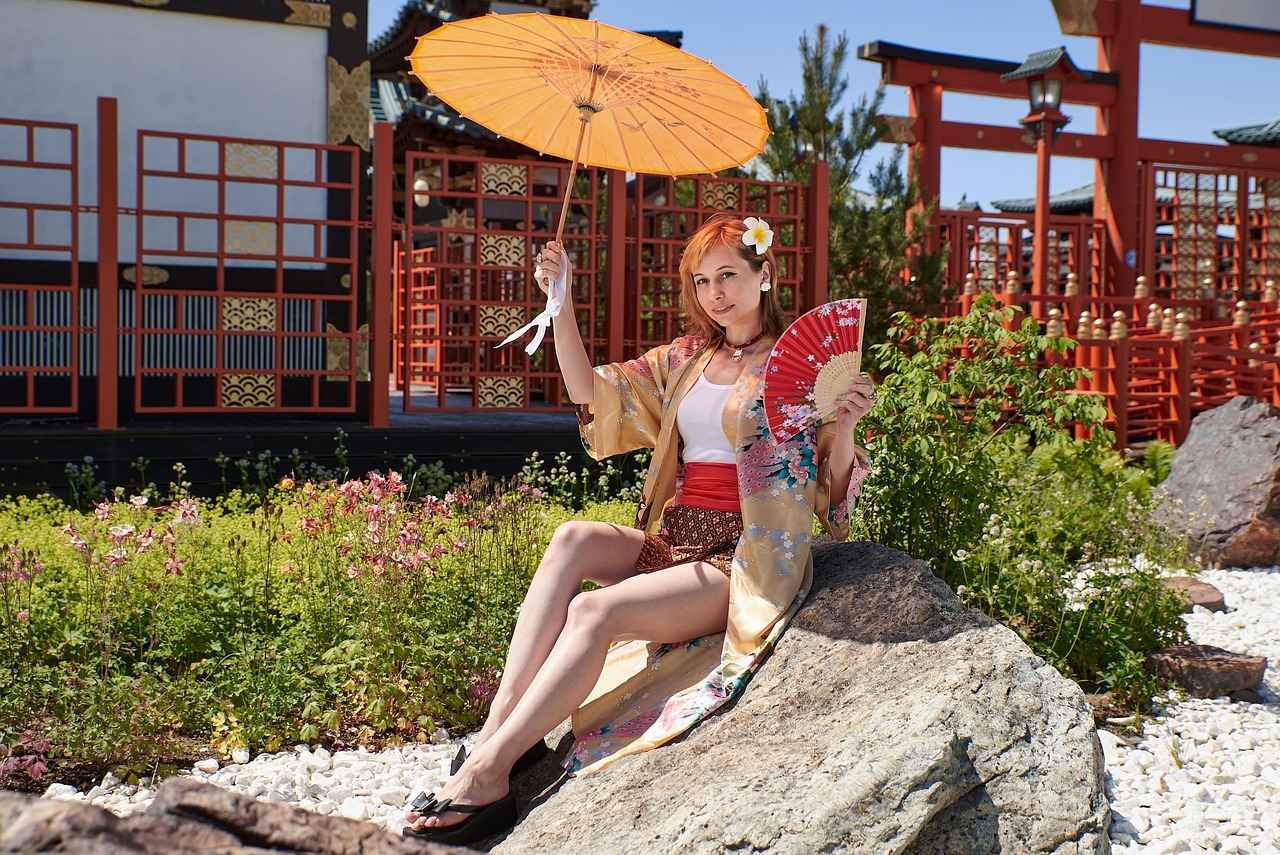
Conclusion: Choosing the Right Attire
Deciding between a kimono and a yukata can be a delightful yet challenging task, especially when considering the various factors that influence your choice. Both garments are steeped in Japanese tradition and culture, but they serve different purposes and are suited for different occasions. Understanding the nuances between the two can enhance your experience and ensure you’re dressed appropriately for your event.
The kimono is a formal garment, often made from luxurious fabrics like silk, and is typically worn during significant cultural events such as weddings, tea ceremonies, and formal gatherings. Its intricate designs and rich history make it a symbol of elegance and tradition. When choosing a kimono, consider the event’s formality and the season, as these factors greatly influence the style, color, and fabric of the kimono.
On the other hand, the yukata is a casual summer garment, usually made of lightweight cotton. It is perfect for outdoor festivals, fireworks displays, and casual gatherings. The yukata’s relaxed style and breathable material make it an ideal choice for warm weather events. When selecting a yukata, focus on the occasion and the comfort it provides, as this will enhance your enjoyment of the event.
Ultimately, your choice between a kimono and a yukata should reflect the formality of the event and the season in which it takes place. By considering these factors, you can confidently select the attire that best suits your needs. Whether you opt for the traditional elegance of a kimono or the casual charm of a yukata, both garments offer a unique way to celebrate Japanese culture.
In conclusion, understanding the differences between a kimono and a yukata, as well as their appropriate occasions, will help you make an informed decision. This thoughtful approach will ensure that you not only look great but also feel confident and comfortable at your next event.
Frequently Asked Questions
- What is the main difference between a kimono and a yukata?
The primary difference lies in their formality and material. A kimono is typically made of silk and is worn for formal occasions, while a yukata is a casual cotton garment suitable for summer events.
- When should I wear a kimono?
You should wear a kimono for formal events such as weddings, tea ceremonies, and cultural festivals. It’s all about embracing the tradition and elegance of the occasion!
- Are yukatas appropriate for any occasion?
Absolutely! Yukatas are perfect for casual summer gatherings, fireworks festivals, and outdoor events. They offer a relaxed vibe while still allowing you to look stylish!
- How do I choose the right kimono for different seasons?
Choosing a kimono depends on the season’s colors and fabrics. For example, lighter fabrics and brighter colors are ideal for spring and summer, while richer colors and heavier materials suit fall and winter.
- Can I accessorize my kimono or yukata?
Yes! Accessories like obi (sashes) and traditional footwear can elevate your look. Just remember to keep it balanced and in harmony with your outfit!







